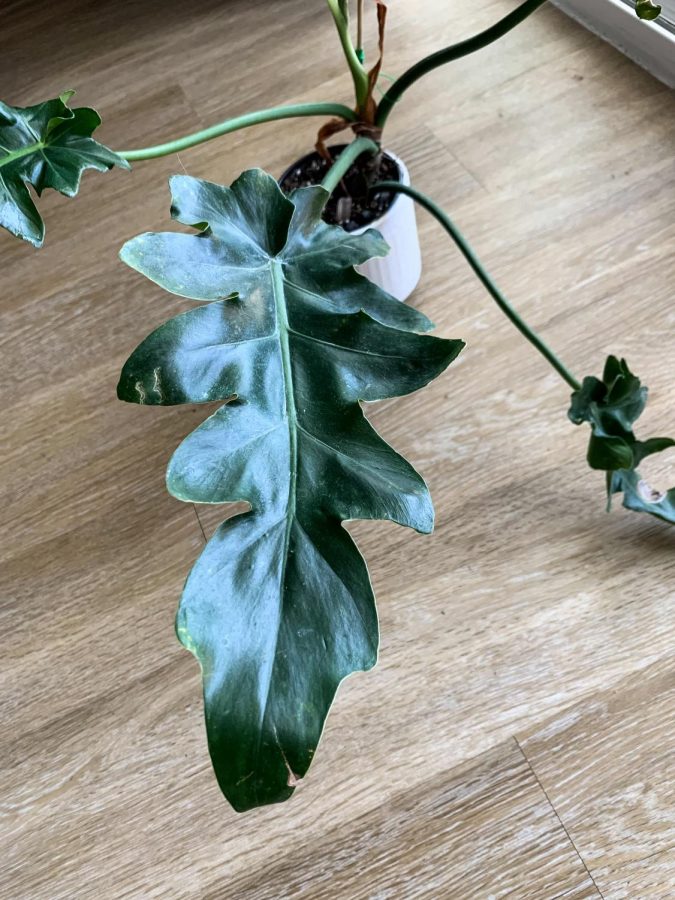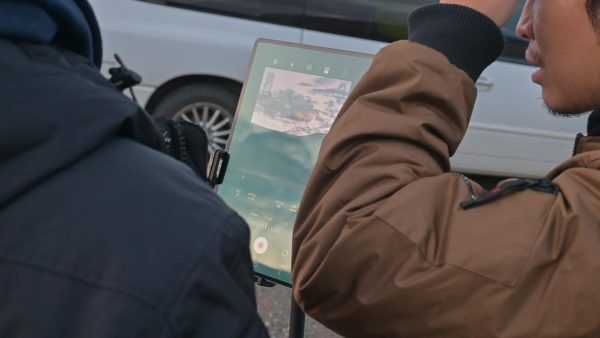My friend Bob Cee
Plant column returns with how best to care for Philodendron Bob Cee hybrid
All you need for this cute guy is good chunky soil, bright light and water once a week.
September 15, 2021
Hello, plant friends! I know, I know, you all were so sad not to see any plant columns over the summer and during the start of the fall semester. But do not worry, I was silently working on something all summer.
As some of you may know, I worked at a plant store during the summer and, of course, gained access to so many unique plants that I never thought I would see in person.
So, to start off this plant series, I wanted to share with you one of my favorite collector plants: the Philodendron Bob Cee hybrid.
Bob Cee does not even deserve a nickname with such a cool official name. So, I will simply address him as Bob Cee.
This philodendron is crazy cool and is known for its unique leaf shape. Like, seriously, the leaves on this plant are outrageous.
The care for him is quite simple. A myth behind collector plants is that they are high maintenance and extremely picky with everything. But Bob Cee is not one of those plants.
All he needs is bright light, good chunky soil and water once a week. Easy, right?
The trick I found for aroids is the soil mix. For the love of all things holy, please do not use Miracle Grow soil. If you do, I will personally find you and give you the proper soil.
For the perfect soil, I found that Ocean Forest soil, horticultural charcoal, pumice and orchid bark makes the ultimate chunky soil.
Now, you may be asking, “Sandi, you mighty plant goddess, why do you want chunky soil?” Well, my sweet plant babies, the answer is very plain and simple.
The chunkier the soil, the better drainage you have. The better drainage you have, the lower the chances of overwatering and killing your very expensive plant.
Propagation on this dude is also very easy! All you need is a node. The more nodes, the better.
A node is a growth point on a plant, where the leaf meets the stem. To find it, just follow the leaf, and find this little bump before it connects to the stem.
From there, you can propagate in a few ways. Either cut below the node, stick it in water, leca or sphagnum moss, and let it do its thing (by thing, I mean grow roots).
Or, you can do my personal favorite way, and that is airlayering. While working at the plant store, I learned this method and am quite obsessed with it. The success rate is much higher, and you do not have to worry about rot.
Dampen some sphagnum moss, wrap it around the node, cover it with saran wrap, tap it shut and let it do its thing. Without cutting the plant, you do not have to worry about loss.
With this method, the dampness of the sphagnum moss will stimulate roots to grow from the node. Once your roots are about an inch or two long, you can cut below the node and plant it in that beautiful chunky soil.
Bob Cee is an excellent plant to try out airlayering and a great gateway plant for collectors. If you try out the Bob Cee and you try airlayering, let me know! I’m here to guide you through the process, and will always be your plant hype girl.






















